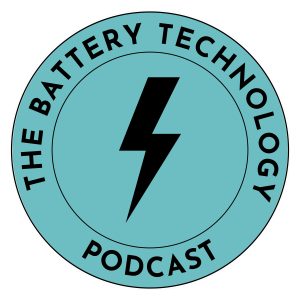In a recent episode of the Battery Technology Podcast, QuesTek’s Executive Vice President of Market Operations, Jason Sebastian, discussed how physics-based digital modeling is transforming the way materials are developed in the battery industry, from slashing timelines to improving performance. Here are the key insights from his conversation with host Ken Davies*:
On the relationship between physics-based modeling and AI in materials science
The physics-based approach is very antithetical to something like machine learning, but they can be brought together in a hybrid way. Machine learning can look at reams and reams of data and discern trends that can then be further explored and buttressed by physics-based models. The real advantage of a physics-based understanding is that it allows you to extrapolate. Machine learning and AI are essentially curve-fitting within a set of data, and when you try to extrapolate beyond that data, you can run into hallucinations. Physics-based modeling doesn’t have that problem. If you know the way the physics works, you can calibrate within a certain range of data and then extrapolate beyond that range and still be confident in the result.
On using recycled aluminum to create battery housings:
There’s a lot of interest in using recyclable aluminum to create battery housings, this kind of beer cans to batteries idea. But when you recycle aluminum, you pick
up things like silicon and iron and copper that compromise the properties that you can get out of it. And it’s a tradeoff for any of these aluminum alloys between strength and conductivity. We’ve been looking into this, and it depends on what your scrap stream is. The ideal alloy for somebody making battery housings from automotive scrap is not the same as the ideal alloy for somebody making housings from aerospace aluminum scrap or from beer cans. So, lots of different alloy opportunities there, and we’ve worked with battery folks on that kind of alloy development.
On the problems that occur when scaling new compounds for manufacture:
There’s a lot of exciting activity happening with anodes and cathodes, sampling all these endless combinations in the periodic table, looking for that magical compound. But taking a compound from the discovery phase to a manufacturing scale, that’s where QuesTek’s technology can come in to help. There are lots of times and temperatures involved in a manufacturing process, and you’re trying to keep these materials and their microstructures stable. The aging and the evolution of materials at temperatures and during processing steps, that’s the stuff that we’ve been digging into. There are a lot of interfaces in a battery and interfaces are places where things mix and where different types of materials problems can originate.
On the use of digital twins and materials concurrency in manufacturing:
Digital twin implies that you have a model of an entire part, or an entire system or an assembly, and that you’re using that to work your way through the design process. It gets us to the idea of materials concurrency, the idea that you can be designing a new material concurrently with the design of the part. Historically, you would design a part and you’d look at its stress analysis, and you could pull down a material from a drop-down menu based on its strength capabilities. But what about the opposite, where you’re looking at a part and saying, “Well, I need a material here that has this kind of strength based on the stresses and the strains. But you know, nothing in the menu achieves that. I’m going to go design a new material that achieves that.”
On the future of materials science:
We see it as very bright, because there are a lot of cutting-edge things coming online or moving into real development mode that require new and novel advanced materials. Nuclear power is seeing a renaissance, energy storage and batteries, there are defense-related things that are pushing the boundaries of material science, and batteries, and these other types of fuel cells. Here in the States, there’s definitely more momentum behind nuclear and fusion. There’s a lot of venture capital going into those industries, and they are very materials-centric and materials dependent.
Listen to the full episode here or on your preferred podcast platform.
*Excerpts have been edited for length and clarity

